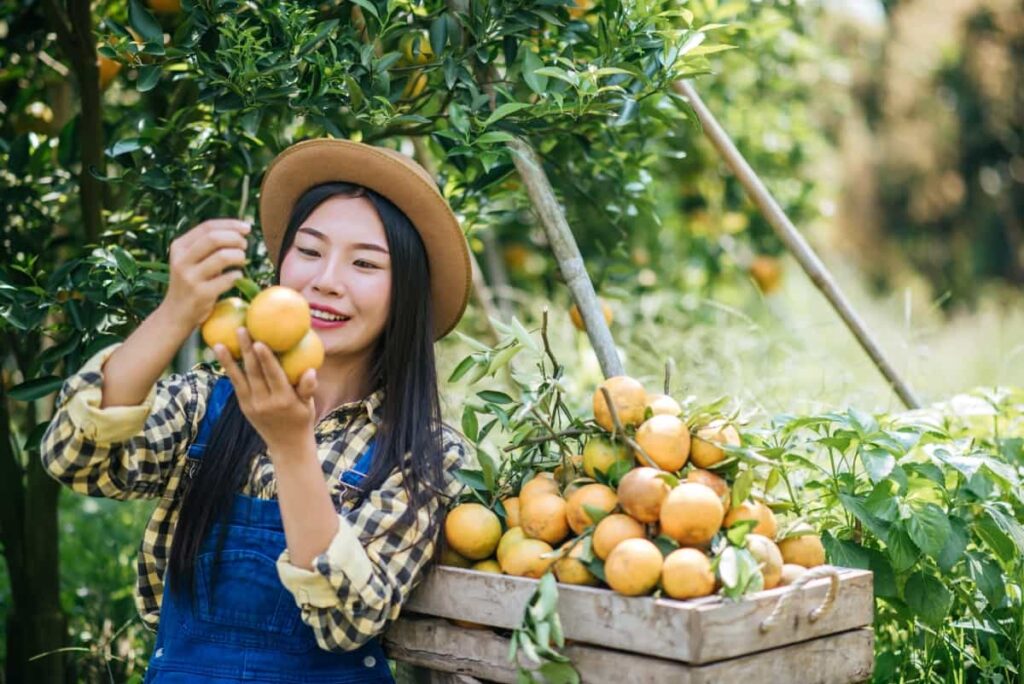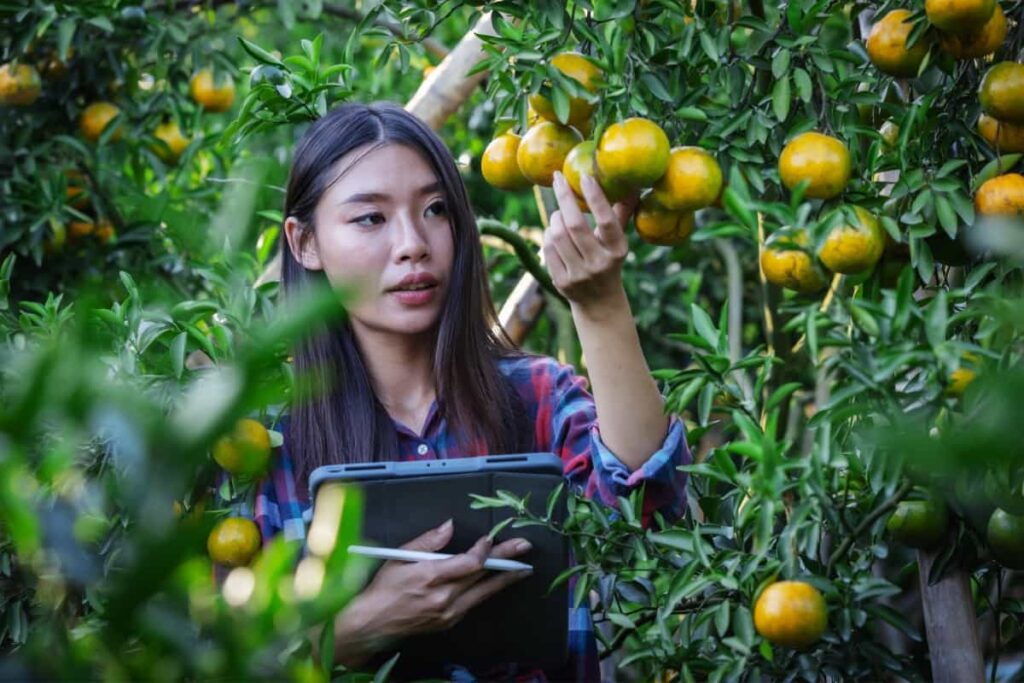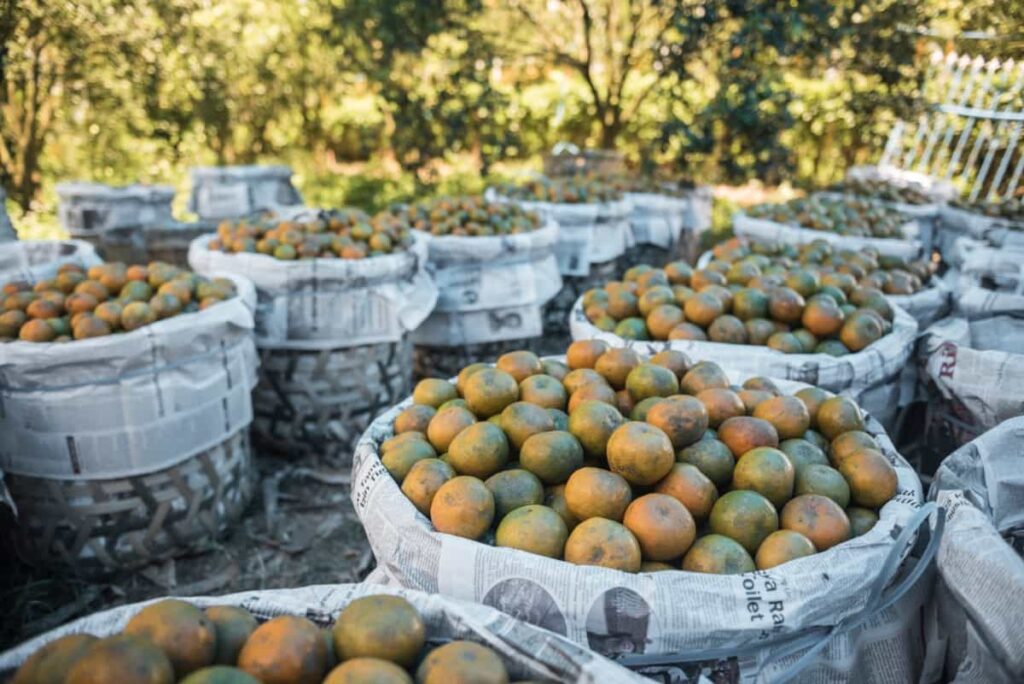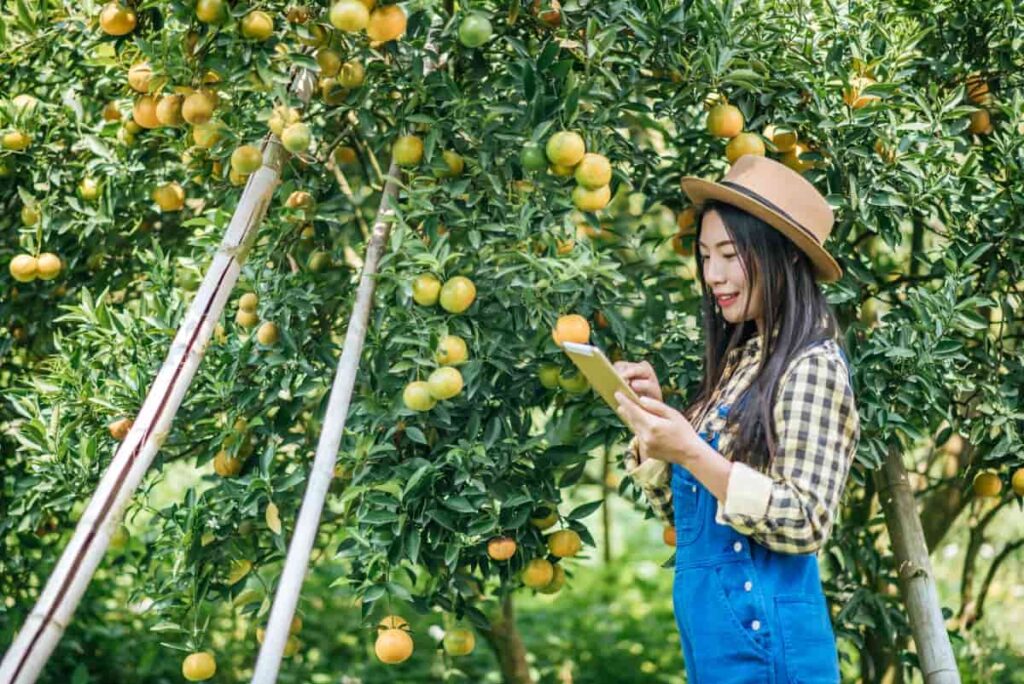Citrus fruits are a popular and widely consumed fruit, rich in vitamin C, antioxidants, and other nutrients. Malaysia, a tropical country with a suitable climate and soil, has a long history of citrus farming. Today, it contributes to food security, income generation, and export earnings. This article explores aspects of citrus farming in Malaysia, including cultivation practices, production costs, and profit, as well as the challenges and opportunities faced by Malaysian citrus growers in domestic and international markets.

Citrus Farming in Malaysia
Starting a Citrus Farm in Malaysia
Citrus fruits are among the most popular and nutritious fruits in the world. They are rich in antioxidants, vitamins, and have many health benefits. Citrus fruits are also widely consumed in Malaysia, where they are grown in various regions with different climatic conditions. Citrus farming is a lucrative and rewarding business for Malaysian farmers, as the demand for fresh and processed citrus products is high both locally and internationally. However, starting a citrus farm in Malaysia requires careful planning, research, and investment.
Best Citrus Varieties for Farming in Malaysia’s Tropical Climate
Malaysia’s tropical climate is ideal for growing various citrus fruits, including oranges, mandarins, lemons, limes, grapefruits, pomelos, and calamansi. However, not all citrus varieties thrive in this climate, as some require cooler or drier conditions for quality production. It is crucial to choose the right citrus varieties for the specific region and environment where you plan to start your citrus farm.
Some of the best citrus varieties for farming in Malaysia’s tropical climate include Musang King, a hybrid mandarin with a distinctive sweet and sour taste; Limau Nipis, a local variety with a small size, green color, and sour taste; Limau Purut, a larger variety with a dark green color and strong aroma, Pomelo, a large citrus fruit native to Southeast Asia, Tambun (sweet), Ipoh (sour), Chersonese (pink), and Ledang (red).
Pomelo, a large citrus fruit rich in vitamin C and fiber, can grow well in tropical climates with adequate rainfall and drainage. Some of the best pomelo varieties for farming in Malaysia include Tambun (sweet), Ipoh (sour), Chersonese (pink), and Ledang (red). Calamansi, also known as limau kasturi or Philippine lime, small citrus fruit with thin peel, yellow or green color, and sour taste. It is used for making drinks, sauces, marinades, and desserts and can grow well in tropical climates with moderate rainfall and sunlight. It is also resistant to most pests and diseases that affect citrus fruits.
Citrus Growing Areas in Malaysia
Citrus is one of the most popular fruits in the world, but it is not native to Malaysia. Citrus originated in Southeast Asia, where it has been cultivated for thousands of years. In Malaysia, citrus was introduced by traders and immigrants from China, India, and other countries. Today, citrus is grown mainly in the states of Johor, Pahang, Perak, Kedah, and Sabah.
These areas have suitable climatic conditions for citrus production, such as warm temperatures, high rainfall, and well-drained soils. Some of the common citrus varieties grown in Malaysia are mandarin, lime, lemon, pomelo, grapefruit, and calamansi.
Innovative Irrigation Techniques for Citrus Orchards in Malaysia’s Dry Seasons
Malaysia has a tropical climate with monsoon seasons: Northeast monsoon from November to March, the southwest monsoon from May to September. During these periods, rainfall is abundant, and irrigation is not a major concern for citrus growers. However, between the monsoons, there are dry spells that can last for several weeks or months.
In case you missed it: 15 Best Fertilizers for Citrus Tree: Homemade, Organic, Liquid, NPK, Schedule, and Prices

These dry seasons can affect the growth and quality of citrus fruits, especially if they occur during the flowering or fruiting stages. To cope with water scarcity, some citrus growers in Malaysia have adopted innovative irrigation techniques, such as drip irrigation, micro-sprinklers, rainwater harvesting, and mulching. These methods can reduce water loss, increase water use efficiency, and improve soil moisture and fertility.
Government Policies and Subsidies in Shaping Malaysia’s Citrus Farming
Malaysia’s government supports citrus farming through various policies and subsidies. These include financial assistance for land preparation, planting materials, fertilizers, pesticides, irrigation systems, farm machinery, and post-harvest facilities. Research and extension services are established to develop new varieties and improve pest and disease management.
Trade fairs, exhibitions, branding campaigns, and export incentives are promoted for citrus products. Cooperatives and associations are encouraged among citrus growers for collective bargaining, input supply, output marketing, and knowledge sharing.
Challenges of Citrus Pest and Disease Management in Malaysian Agriculture
Citrus is a major global fruit crop grown in over 140 countries. Malaysia, a top producer of tropical fruits and vegetables in Southeast Asia, faces challenges in citrus production due to pest and disease infestations. Common pests include citrus leafminer, psyllid, blackfly, thrips, fruit fly, and root weevil, which damage the leaves, stems, roots, and fruits, reducing their quality and yield.
Common diseases include citrus canker, greening, scab, tristeza virus, and gummosis, causing lesions, discoloration, deformation, wilting, and death. Effective pest and disease management in Malaysian citrus farming requires integrated approaches that combine cultural, biological, chemical, and physical methods. These practices include selecting resistant varieties, using certified planting materials, maintaining sanitation and pruning, applying organic mulches and fertilizers, using biological control agents, judicious pesticide application, and regular monitoring of pest and disease outbreaks.
Malaysian Citrus Farming Cost per Acre
The cost of citrus farming in Malaysia varies depending on the type of citrus, the location, the size of the farm, the inputs used, and the management practices adopted. The average cost of production for lime farming in Malaysia was RM 11,895 (USD 2,837) per hectare (or RM 4.82 or USD 1.15 per kg) in 2010. The major components of the cost were labor (36%), fertilizer (19%), pesticide (15%), irrigation (10%), and land preparation (9%).
The average cost of production for pomelo farming in Malaysia was RM 16,788 (USD 4,002) per hectare (or RM 1.68 or USD 0.40 per kg) in 2010. The major components of the cost were labor (41%), fertilizer (18%), pesticide (14%), irrigation (9%), and land preparation (8%). The average cost of production for mandarin farming in Malaysia was RM 18,841 (USD 4,494) per hectare (or RM 3.77 or USD 0.90 per kg) in 2010. The major components of the cost were labor (38%), fertilizer (20%), pesticide (16%), irrigation (10%), and land preparation (7%).
Citrus Farming Profit for Malaysian Farmers
Citrus farming in Malaysia generates revenue from fruit sales and production costs. In 2010, the average revenue for lime farming was RM 24,750 per hectare, with an average net profit of RM 12,855 per hectare. The average net profit for pomelo farming was RM 99,000 per hectare, with an average net profit of RM 82,212 per hectare.
The average revenue for mandarin farming was RM 50,000 per hectare, with an average net profit of RM 31,159 per hectare. The profit-cost ratio for citrus farming in Malaysia is 2.65, with the average revenue for lime farming being RM 24,750 per hectare and the average net profit for pomelo farming being RM 9,90 per kg.
Average Yield of Citrus Fruits per Acre in Malaysia
The yield of citrus fruits in Malaysia is influenced by various factors such as tree type, age, climate, soil, irrigation, fertilization, pest and disease management, and harvesting practices. A 2010 study by MARDI showed that lime farming yielded 24.75 metric tons per hectare, while pomelo yielded 100 metric tons per hectare. Mandarin yielded 50 metric tons per hectare in the same year. The average yield for pomelo and mandarin farming in Malaysia was also similar.
In case you missed it: How to Increase Citrus Fruit Size: Exploring Optimization for Larger Citrus Fruit Growth

Integrating Technology in Citrus Farming: How Malaysian Citrus Growers are Innovating
Malaysian citrus farming is leveraging technology to improve productivity, quality, and profitability. This includes the use of precision agriculture, drip irrigation, fertigation, tissue culture, biotechnology, post-harvest handling, and value addition. Precision agriculture uses sensors, drones, satellites, GPS, and software to monitor crop conditions and inputs. Drip irrigation delivers water, nutrients directly to the root zone, improving yield and quality. Fertigation applies fertilizer through irrigation water, ensuring precise and timely delivery.
Tissue culture propagates plants from a single cell or tissue, producing disease-free and uniform planting materials. Biotechnology involves manipulating living organisms to produce useful products or processes, such as genetic engineering for transgenic citrus plants. Post-harvest handling preserves and enhances the quality and shelf life of harvested fruits through proper grading, washing, waxing, packing, cooling, storage, and transportation. Value addition transforms raw fruits into processed products with higher value and market demand.
Organic Citrus Cultivation in Malaysia: Practices, Benefits, and Market Opportunities
Organic citrus cultivation in Malaysia is a sustainable farming method that uses natural inputs and methods without synthetic chemicals. It follows the Malaysian Organic Scheme guidelines set by the Department of Agriculture. Practices include using organic seeds, manures, composts, biological control agents, crop rotation, mulching, weeding, pruning, and harvesting at optimal maturity. Organic citrus cultivation improves soil health, reduces environmental pollution, enhances biodiversity, and increases crop resilience to climate change and pest and disease outbreaks. It also reduces greenhouse gas emissions.
In case you missed it: When to Fertilize Citrus Trees in Pots: Schedule for Winter, Summer, and Spring

Conclusion
Citrus farming in Malaysia demands adherence to efficient cultivation practices. Balancing production costs is vital for sustainable profitability. With careful management, farmers can optimize yield, ensure quality, and navigate the market dynamics, securing a successful and economically viable citrus farming venture in the Malaysian agricultural landscape.
- How to Raise Pigs in Your Own Backyard: A Comprehensive Guide
- Budget Friendly Sheep Shed Ideas: Cheap and Low-Cost Tips
- How Much Do Cattle Farmers Make: Revenue Streams in Cattle Farming
- Management Pests and Diseases in Your Cotton Field
- Sheep Farming Business Plan for Beginners
- Aquaponic Farming at Home: A Step-By-Step Guide
- Profitable Village Farming Business Ideas in 2024
- High-Yield Aquaculture: Fast-Growing Fish for Farming
- Effective Fish Pond Construction Techniques for Beginners
